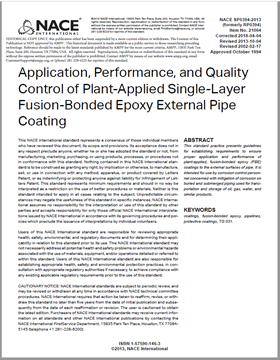Search
SP0313-2013-SG, Guided Wave Technology for Piping Applications
Also Purchased
SP0394-2013 (formerly RP0394), "Application, Performance, and Quality Control of Plant-Applied Single Layer Fusion-Bonded Epoxy External Pipe Coating”
Product Number:
21064-SG
Publication Date:
2013
$179.00
SP0308-2018-SG, Inspection Methods for Corrosion Evaluation of Conventionally Reinforced Concrete Structures
Product Number:
21128-SG
ISBN:
1-57590-220-6
$109.00
SP0390-2009 (formerly RP0390), Maintenance and Rehabilitation Considerations for Corrosion Control of Atmospherically Exposed Existing Steel-Reinforced Concrete Structures
Product Number:
21044-SG
ISBN:
1-57590-059-9
$179.00
Recently viewed




